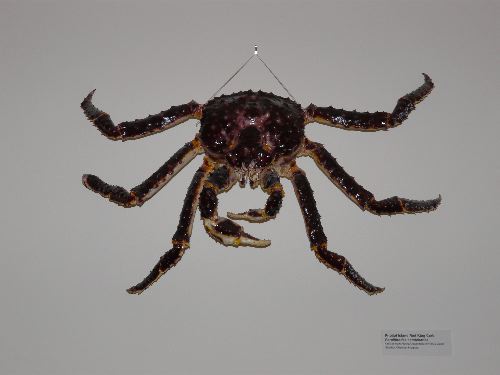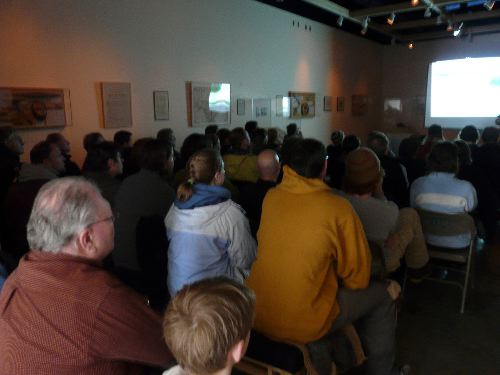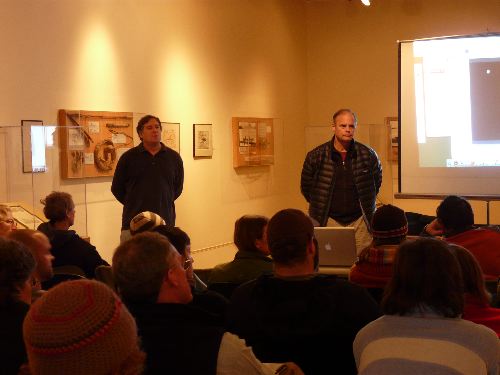I knew I was approaching Dutch Harbor, Alaska when the plane dropped into the clouds and the cliffs seemingly appeared out of nowhere next to the plane. The snow-covered cliffs were so close, it felt as if one could reach out and touch the snow! Otherwise, it was a smooth ride from Anchorage. Apparently, we were fortunate that we did not have to refuel the plane in King Salmon or King Cove on our way out to Dutch. It is common to have to refuel if there are strong head winds.
I was surprised to see all of the snow in town. Dutch has as much snow as Anchorage, but then in Anchorage all of it has been melting rapidly the past several weeks. The mountains around town look inviting for the skier or snowboarder, however, I didn’t see any tracks on the hillsides – yet. Dutch Harbor is a small coastal village or more correctly two small coastal villages, Dutch Harbor and Unalaska. Dutch Harbor is known for the Discovery Channel’s The Deadliest Catch, which is filmed during the winter fishing season. I hope I get to experience some the rough seas I have heard about…it just adds to the adventure! I want to compare stories with Mr. Blaney and Mr. Atkinson in their classrooms at Central Middle School of Science in Anchorage!
Now this is a King Crab! What's for dinner?
 Now this is a King Crab! What's for dinner?
Now this is a King Crab! What's for dinner?
King Crab at the Museum of the Aleutians, Dutch Harbor, Alaska.
The majority of the science crew has already arrived. They gathered at the Museum of the Aleutians for a public presentation on Monday night. The room was packed with the scientists and the general public. Lee Cooper, Principal Investigator of the BEST/BSIERP research expedition, presented an overall view of the research to be conducted on the Healy. Several other researchers discussed their research, which I will discuss in detail in future journals.
A packed house!
 A packed house!
A packed house!
A packed house for the Healy presentation at the Museum of the Aleutians, Dutch Harbor, Alaska.
The research partnership and collaboration between the National Science Foundation and the North Pacific Research Board is unique and epic in proportions. The two major funding organizations are working together to fund collaborative research of the patch dynamics in the Bering Sea ecosystem. Researchers are looking at the Bering Sea food web, lower trophic level effects on apex predators, and climate change feedbacks. Data will be gathered to answer the following questions: 1) How many plants and animals live Bering Sea ice?; 2) How is their abundance controlled by ice properties?; and 3) What is their fate, when the sea ice melts?
Lee Cooper and Clarence Pautzke fielding questions
 Lee Cooper and Clarence Pautzke fielding questions
Lee Cooper and Clarence Pautzke fielding questions
Dr. Lee Cooper, University of Maryland, and Dr. Clarence Pautzke, North Pacific Research Board, (left to right) fielding questions at the Museum of the Aluetians, Dutch Harbor, Alaska.
There are other great examples of collaboration that will take place on the Healy, such as, the BBC filmmakers working with Jim Lovvorn of the University of Wyoming. Together they will conduct aerial photography surveys of the wintering spectacled eiders off St. Lawrence Island. The collaboration and coordination of all the research efforts is quite impressive.
Dr. Clarence Pautzke, North Pacific Research Board, wrapped up the night by giving a tremendous historical overview of the Bering Sea fishery, Dutch Harbor, and the context of current research.
For more information on the BEST/BSIERP project, please visit the website of the North Pacific Research Board: http://www.nprb.org/bering-sea-project

